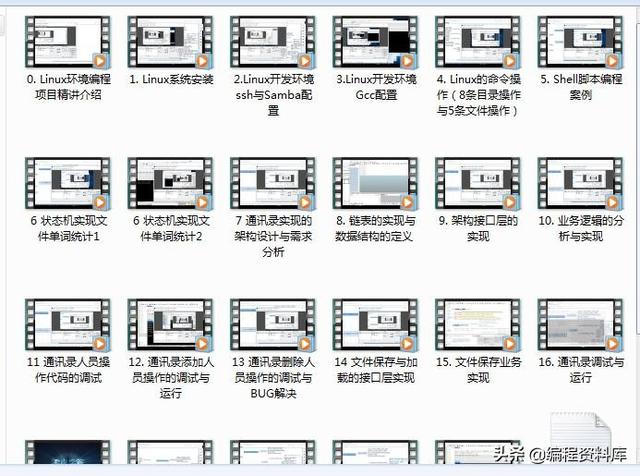发上,对于串口的开发都是对处理器寄存器的配置。但是,在Linux下串口编程就有所不同,下面我们来简单介绍下Linux下串口编程的基本过程。
Linux下串口编程大致过程如下:

可以看到,大致过程同单片机的编程流程是非常类似的,但是我们不需要跟单片机开发一样去配置寄存器,而是调用系统内核的相关函数就可以直接配置好了,而具体寄存器的配置则是在底层驱动代码里面实现,我们只需要关注上层应用的开发就行。
一般,在Linux下进行串口编程,串口初始化的步骤如下:
Linux下串口编程常用到的函数如下
- 读取当前参数函数:
int tcgetattr(int fd, struct termios *termios_p);
-参数1:fd是open返回的句柄
-参数2:*termios_p是前面介绍的结构体
-在初始化开始调用这个函数
- 获取当前波特率函数
speed_t cfgetispeed(const struct termios *termios_p);
speed_t cfgetospeed(const struct termios *termios_p);
-*termios_p:前面介绍的结构体
-失败返回-1;成功返回波特率
- 波特率设置函数
int cfsetispeed(const struct termios *termios_p, speed_t speed);
int cfsetospeed(const struct termios *termios_p, speed_t speed);
-参数*termios_p:前面介绍的结构体
-参数speed:speed波特率
-执行成功返回0,失败返回-1
- 清空串口BUFFER中的数据函数
int tcflush(int fd, int queue_selector);
-参数1:fd是open返回的句柄
-参数2:控制tcflush的操作。常用的有三个值,
TCIFLUSH清除正收到的数据,且不会读取出来;
TCOFLUSH清除正写入的数据,且不会发送至终端;
TCIOFLUSH清除所有正在发生的I/O数据
执行成功返回0,失败返回-1
- 设置串口参数函数
int tcsetattr(int fd, int optional_actions, const struct termios *termios_p);
-参数fd:open返回的文件句柄
-参数optional_actions:参数生效的时间。有三个常用的值,
TCSANOW:不等数据传输完毕就立即改变属性;
TCSADRAIN:等待所有数据传输结束才改变属性;
TCSAFLUSH:清空输入输出缓冲区才改变属性;
-参数*termios_p:在旧的参数基础上修改的后的参数
-返回值:执行成功返回0,失败返回-1
-一般初始化最后会使用这个函数
- 代码示例:
#include <stdio.h>
#include <sys/types.h>
#include <sys/stat.h>
#include <fcntl.h>
#include <unistd.h>
#include <string.h>
#include <termios.h>
#define UART3 "/dev/ttySAC3"
int UartInit(int fd, int Baud, int nBits, char nEvent, int nStop)
{
struct termios newtio, oldtio;
//获取当前串口参数
if(tcgetattr(fd, &oldtio) != 0)
{
perror("tcgetattr oldtio error!\r\n");
return -1;
}
bzero(&newtio, sizeof(newtio));
newtio.c_cflag |= CLOCAL | CREAD;
newtio.c_cflag &= ~CSIZE;
switch(nBits)
{
case 7:
newtio.c_cflag |= CS7;
break;
case 8:
newtio.c_cflag |= CS8;
break;
default:
break;
}
switch(nEvent)
{
case 'O':
newtio.c_cflag |= PARENB;
newtio.c_cflag |= PARODD;
newtio.c_iflag |= (INPCK | ISTRIP);
break;
case 'E':
newtio.c_cflag |= PARENB;
newtio.c_cflag &= ~PARODD;
newtio.c_iflag |= (INPCK | ISTRIP);
break;
case 'N':
newtio.c_cflag &= ~PARENB;
break;
default:
break;
}
switch(Baud)
{
case 9600:
cfsetispeed(&newtio, B9600);
cfsetospeed(&newtio, B9600);
break;
case 115200:
cfsetispeed(&newtio, B115200);
cfsetospeed(&newtio, B115200);
break;
default:
break;
}
switch(nStop)
{
case 1:
newtio.c_cflag &= ~CSTOPB;
break;
case 2:
newtio.c_cflag |= CSTOPB;
break;
default:
break;
}
newtio.c_cc[VTIME] = 0;
newtio.c_cc[VMIN] = 0;
tcflush(fd,TCIFLUSH);
if((tcsetattr(fd, TCSANOW, &newtio)) != 0)
{
perror("tcsetattr newtio error. \r\n");
return -1;
}
return 0;
}
int main(int argc, char **argv)
{
int fd, ret;
int len;
char buffer[512];
int i;
ssize_t nByte;
memset(buffer, 0, 512);
/*打开串口*/
if((fd = open(UART3, O_RDWR|O_NOCTTY|O_NDELAY)) < 0)
{
printf("open %s failed. \r\n", UART3);
return 1;
}
printf("open success. \r\n");
/*串口初始化*/
UartInit(fd, 115200, 8, 'N', 1);
i = 10;
buffer[0] = 0x11;
while(i > 0)
{
i--;
write(fd, &buffer[0], 1);
sleep(1);
}
printf("please input. \r\n");
memset(buffer, 0, sizeof(buffer));
while(1)
{
while((nByte = read(fd, buffer, 512)) > 0){
buffer[nByte 1] = '\0';
write(fd, buffer, strlen(buffer));
memset(buffer, 0, strlen(buffer));
nByte = 0;
}
}
close(fd);
return 0;
}





